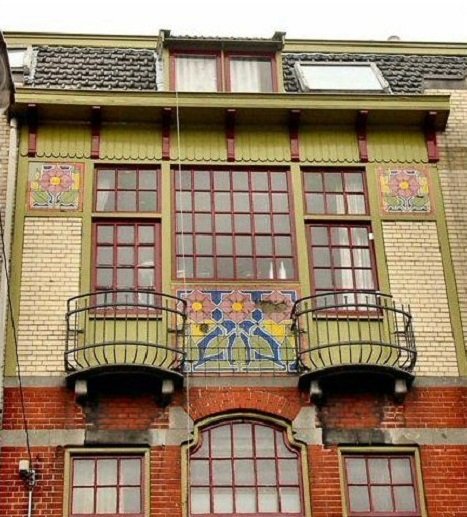#13893. Elegant Art Nouveau: Two-toned facade with decorative panels and wrought iron balconies

What we see here is a striking example of Art Nouveau architecture, showcasing the characteristic features of this style from the late 19th to early 20th century. The building facade presents an interesting combination of materials: the lower part is made of red brick, while the upper section features light-colored brick with contrasting window frames.
The central part of the facade deserves special attention with its large windows framed by dark red wooden elements. The window group forms an impressive composition with a dominant central window and smaller side panels. Above the windows, there is a decorative yellow awning with red vertical elements creating a rhythmic pattern.
A distinctive Art Nouveau feature on this facade is the pair of elegant wrought iron balconies with flowing, organic lines and decorative panels between them. These panels are adorned with floral ornaments in bright colors—a typical Art Nouveau motif. Similar decorative panels with plant-inspired designs are also placed on both sides of the upper windows.
When designing a facade in a modern interpretation, several techniques can be borrowed: using contrasting materials for different levels of the building, accentuating window groups with colored framing, adding decorative elements with geometric or botanical motifs, and incorporating wrought iron elements with flowing lines for balconies or railings.